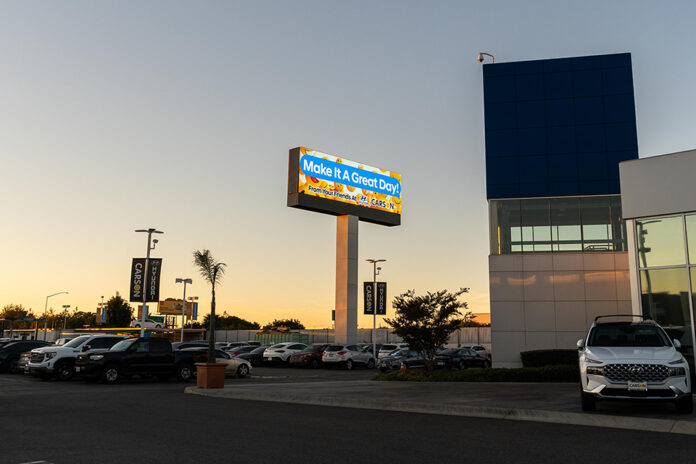Over the years, you’ve probably focused on all of the reasons why your shop isn’t ready to sell digital signage. But what if you flipped the script and focused on the skills your shop does have and the ways in which it is ready to sell digital signs?
We spoke with Mitch Leathers, VP of Marketing Communications at SNA Displays, which provides a full line of both interior and exterior LED signs, about all the ways sign shops are equipped to take on the digital sign market starting today
1. It’s Not as Hard as You Think
One of the top reasons sign shops hesitate to enter the digital sign market is the perception that it’s complicated, costly, and complex. The truth is the learning curve isn’t as steep as you may think, and there are partners ready to guide you through some of the parts of the market that can be a bit more confusing.
“You don’t really have to know everything,” says Leathers, “we can help you, at least in the beginning, that way you can learn the ropes, learn some of the processes that go into how to troubleshoot, what to do when the screen does this, that type of thing.”
SNA offers its partners “LEDucation,” resources and other educational materials to help them better understand the important aspects of designing and implementing a digital display. Resources include everything from understanding pixel pitch to LED versus LCD to LED display temperature and how heat can impact the performance of the signage.
“We do e-briefs that are really targeted to the clients and would-be clients that really don’t know much about the digital signage space,” says Leathers. “It covers the fundamentals, the basics of digital signage, be it taking photos of digital signage, which can be tricky, or walking through very simple troubleshooting steps like, the screen goes blank—what could it be?”
Your manufacturing partner’s success is directly tied to your sign shop’s success, so they are willing and eager to help you flourish in this market.

2. You Already Possess the Skills
For one, you’re a signage pro, which means you can spot when a dynamic form of signage is the right choice for a project or client. “Most sign shops are already tuned in when it comes to the right kind of information display or messaging in their area, which again can be used [to sell] for traditional, static, or digital,” says Leathers. “It’s another tool in their toolkit that would allow them to open up the digital signage avenue with at least customers that trust them.”
And its those existing customer relationships that give your sign shop a huge advantage in this market—especially with manufacturing partners who may not have the leverage, influence, or connections in your local area.
“Most sign shops, certainly successful ones, just have an advantage that others don’t in the digital signage industry,” says Leathers. “I think sign shops certainly have a leg up there even though they may not feel it because they work in a traditional space. They certainly would have the relationships and the advantage they need to go into digital or to recommend digital to clients.”
Local know-how and connections also make a huge difference in navigating the permitting process, which can be a large part of implementing a digital sign project. National digital sign manufacturers can’t know the regulations in every town and county, and sign shops’ knowledge of the local permitting codes in their area is a huge boon to not only their clients, but also their manufacturing partners.
3. Your Shop is the Key to Increased Digital Signage Adoption
Leathers says that when confronted with digital signage, many sign shops default to saying their customers are satisified with their traditional, static signage and haven’t been asking for anything different.
However, Leathers says it’s key for sign shops to be proactive and get out ahead of the trend toward digital signage and introduce their clients to the option. As a trusted advisor, your sign shop is key in educating and converting that existing client over to the benefits of digital signs.
“You wouldn’t want to wait for them to be like, ‘hey we want to go digital,’ because they’re probably going to go somewhere that has that experience already,” explains Leathers. “So I think for sign shops that are looking to get into this space, it’s important for them to go to their trusted clients and be up front and be recommending certain types of digital signage to their clients who think that they’re happy with their traditional signage. That’s an area where sign shops are the best candidates to turn many of these local clients to digital signage because they may not trust a company like us that just exclusively does digital signage.
“It’s important for even traditional sign shops who are looking to get into his space to be proactive.”
Selling and installing digital signage isn’t as big of a leap as you may think. If you’re interested in getting started, now is the time to begin changing the perception of your sign shop and rebranding yourself as a provider of digital signage.











